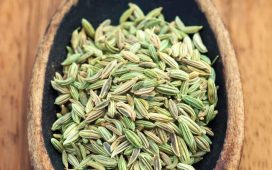In this, the component of the ‘new’ can also be replaced by settings and things to which you return after a gap. Excited and happy, you use both the limitations and advantages of the locally available materials to engage with whatever surrounds you.
As it is with art, it often is with food and cooking. After a long immersion in desi food, when you reach a European place, especially one where there is no great presence of Indian raw materials, vegetables or spices, you find you have a beautifully blank and challenging canvas in the shape of someone else’s western kitchen.
Suddenly, there is no paanch phoron, no bhindi or karela, and no decent goat meat to fall back on when considering what to cook. There’s chicken, of course, gorgeously corn-fed with a covering of rich golden skin. There is pork, beef and lamb of variety and quality you do not get at home.
There is fish and seafood, and then there are the usual suspects of eggs and butter. To go with these, you have foreign salads, capers, olives, and cheese.
You could, of course, trek across the big European city to desi dukaans, but why would you? This new world of foodery is your array of new shades of paint and new drawing materials that you must learn or re-learn how to use, and this – if you enjoy the challenge, this is extremely happy-making. So, your cooking habits change across the weeks, and your palate shifts somewhat. You go for months without daal, sabzi or roti; instead of kachha kachumbar, you delve into salad-making, splashing and slashing like Jackson Pollock with new combinations of dressing. Despite the heat outside, you explore the joys of roasting stuff in the oven. Breakfast becomes a moment of deepest pleasure without once touching anything warm; you get into a rhythm of eating cold cuts, olives, artichokes, cheese, tomatoes stuffed with garlic and herbs, pickled gherkins, and amazing bread.
There are, of course, overlaps with what you would eat at home, but here too, you do things differently. Eggs are a good case in point. Given the freshness and variety, you don’t mess with the eggs too much, minimum frying, delicate poaching, or scrambling into a creamy mousse.
When you do make an omelette, you add all kinds of cheese. When you see repeats of a gourmet recipe from the TV series called The Bear, you indulge in Instagram competitions with local friends to emulate the formula. You beat the eggs through a sieve to make the mixture smoother. You find a soft cheese that’s similar to the Boursin shown in the series.
You muddle the mix in a not-too-hot pan, tricking it into believing it’s going to be scrambled egg before you spread it out and let it settle a touch. You pay in the cheese and delicately roll the thing into some salaam to a bistro omelette.
Across your sojourn, your real identity does bubble up from time to time. Friends demand an Indian meal, and you make it. Someone insists you try out a ghastly branch of the Udupi chain, and then you have to find a better idli-dosa somewhere else. You go to some well-meaning local person’s dinner, and they’ve decided you might like their version of ‘Indian’ food.
Coming to the end of your trip you remember the bun-anda kiosk outside your house, and one morning, something flips. You find yourself chopping onions, green chillies and tomatoes; instead of olive oil or butter you heat up the neutral oil; you do a baghaar of rai before frying up the chopped stuff; you mix in the beaten eggs, add haldi and lal mirch powder; you throw the delicate cooking out of the window and make a proper anda-bhurji. The preposterous joy it gives you tells you it’s time to go home.








